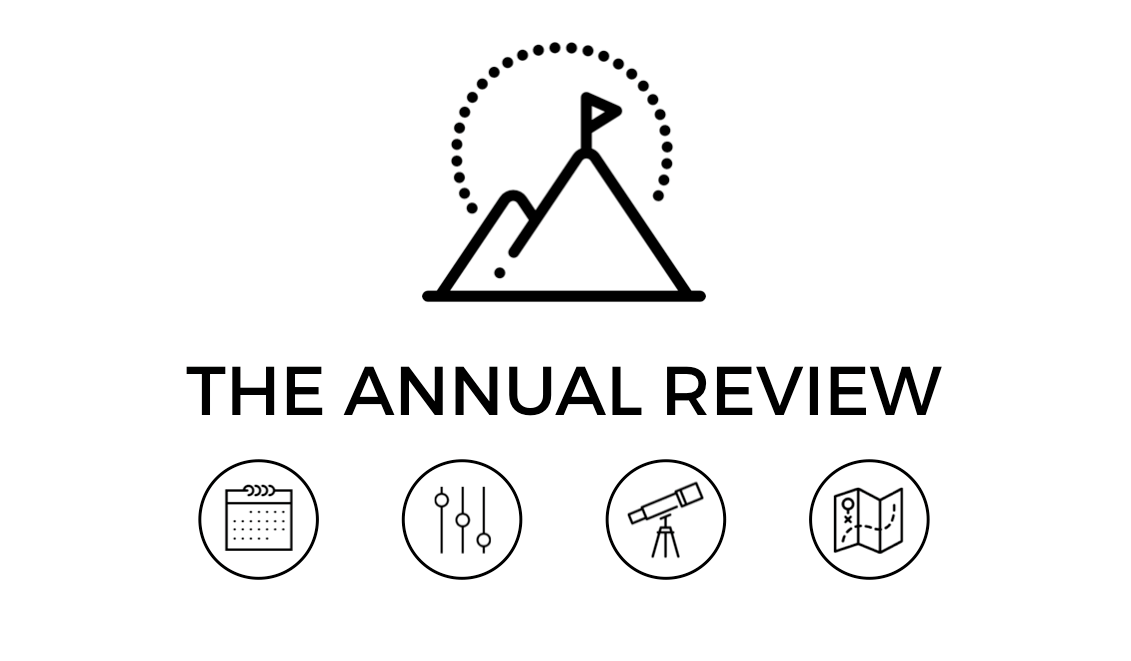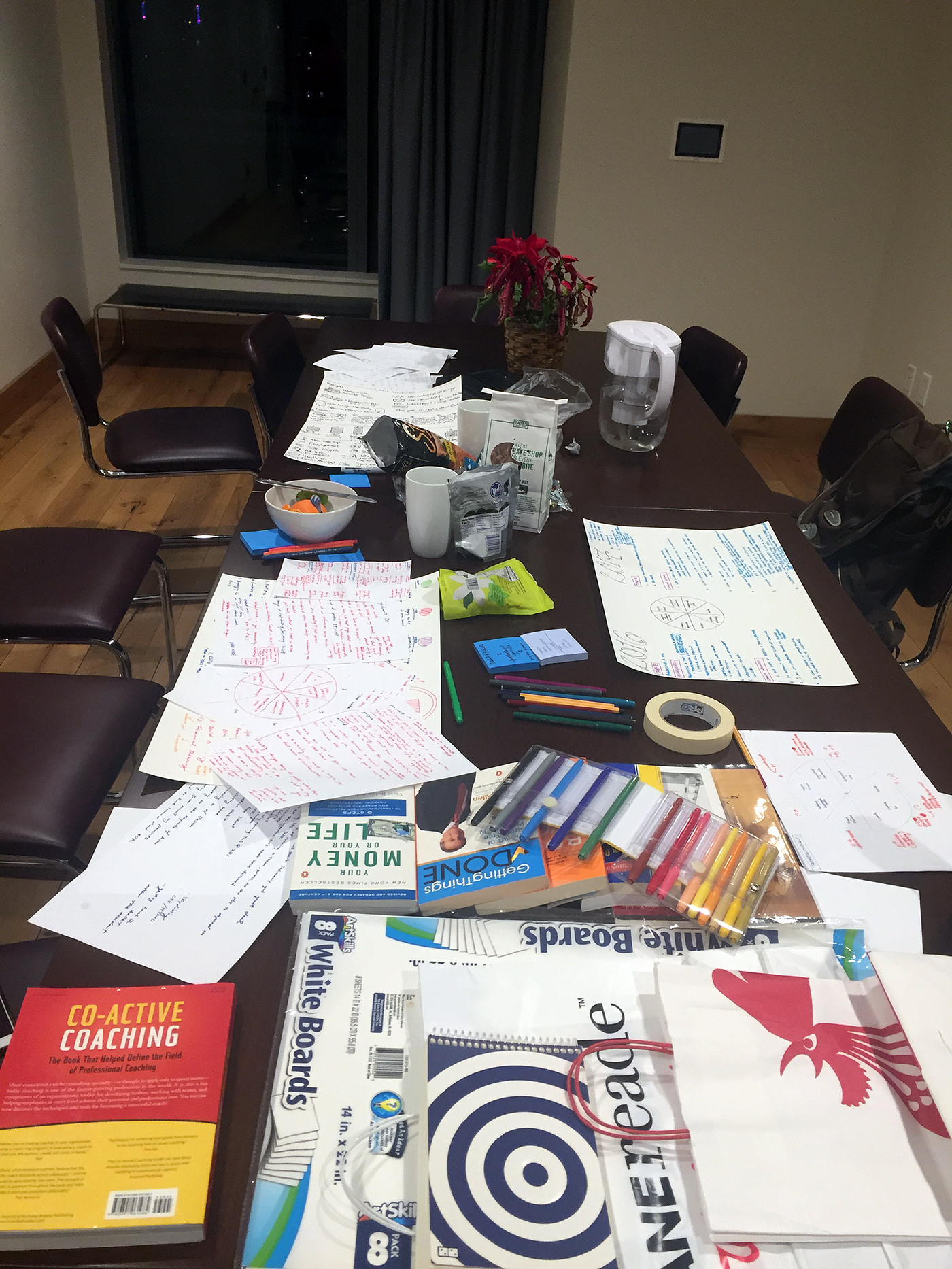personal annual review
src: How to Run Your Own Annual Review | by Jason Shen | Better Humans - 2017-12-19
Abstract
How to run your own annual review
Forget Resolutions—Here’s Your Blueprint for Making Next Year a Smash Hit

December can be a challenging month for ambitious people. Work can slow to a crawl as holiday parties and end of quarter business planning seem to swallow up our time. It can seem like no one is starting new projects, opening new positions, or signing new contracts.
So use December as an opportunity to look inward and get your own affairs in order. I’m going to share with you a technique I’ve used to end the year feeling strong and ready to take the new year by the horns.
This process was co-created with my friend and executive coach Belinda Ju.
New Years Resolutions
Let’s get something out of the way: New Year’s resolutions have a bad reputation.
Around 40–50% of Americans say they make New Year’s resolutions. Few are able to stick with their resolution. Without a strategy, resolutions merely reflect hopes and dreams, rather than realized outcomes.
Research by John Norcross and his colleagues at the University of Scranton has determined that just under half of resolvers were successful in changing their behavior. And here’s what the successful resolvers did more of:
- Tried hard and made a real effort to stick with the new behavior (sounds obvious but it was a statistically significant difference!)
- Thought about the severity of the problem, and how it was impacting their life
- Reminded themselves about their resolution
- Avoided situations where they would give in
Obviously, self-knowledge plays a great deal in the success of goal setters. The idea of self-reflection as a component of successful goal achievement is well-known. It’s perhaps best captured in this quote, from Harvard educator Howard Gardner:
“Extraordinary individuals stand out in the extent to which they reflect — often explicitly — on the events of their lives, large as well as small…by seizing the opportunity to leverage and frame these experiences, we gain agency over them. And this heightened agency, in turn, places us in a stronger position to deal with future experiences, even as it may alter our own sense of strengths and possibilities.”
Are you sold on this idea yet? Great, let’s dive in.
The Annual Review
I’ve experimented with various strategies for making the most of the self-reflection and psychological power of the New Year. I’ve found the approach I give you here to be simple, straightforward, and the most powerful.
What You Need
- 3+ hours of uninterrupted time — you need the time to go deep, reflect, formulate your thoughts, and to set intentions that feel right.
- Large paper and/or Post-It notes—an activity like this often is better without the distractions of a computer or phone (and you may be using those to look up information as you go). You can start with Post-It notes and move to complete on the large paper if you’d like. (If you must, a digital device like a laptop or tablet can also suffice.)
- Sharpie or other writing instruments—you might want different colors, highlighters, etc. to help organize material as it.
- A writing surface or a wall—it can be helpful to review your thoughts / ideas in one big place. Clear a table, use a whiteboard if you have one.
- Journals, calendars and other personal data — since you’re reflecting on the year, it’s helpful to have things that can jog your memory and remind you of all the things that have happened.
- A few people you feel really close to — you can do this exercise alone but it’s definitely more powerful if you can share it with one or two people you really trust.

Gather all your materials and give yourself space to work.

Step 1: Reflect Back
Looking back is about closing the chapter on the last year of your life. You can start by just going through your photos, journal entries, update emails and calendar to remind yourself of everything that you’ve done and experienced in the last year. You can even look at text messages or emails with people who are close to you. You might want to set a timer for an hour or so to do this.
Once you feel steeped in what happened in the year, set a timer for three minutes at a time and jot down as many events or points as you can for each question.
- What were the highlights of the year? What made you feel proud, joyful, and loved?
- What were the low parts of the year? What was hard? What made you feel hurt, angry, or sad?
- What did you learn this year? What do you now know about yourself, other people, and the world at large?
You might end up going over your timer (particularly on the third question), and that’s okay. They’re just guidelines to keep you motivated and moving along.
Once you’ve gone through each question and generated your list of thoughts /memories/lessons, it can be a good opportunity to talk through them with a partner or close friend.
Some questions to consider:
Did anything surprise you? What stood out to you? How have these events changed you? What will you remember most five years from now?
If you’re alone, you can simply reflect on these questions on your own and jot some thoughts down in a journal.
Once you’re done with reflection and discussion, you can take the additional step of re-writing somewhere more permanent (on your big paper, journal, or computer) a summary of your top 5:
- Highlights — things to cherish and celebrate. How lucky and capable you are for having gone through them these things.
- Low parts — things to be grateful they are over, or at least acknowledge that they didn’t end you. Put these behind you. (You can even burn or tear up this page or these post-its if you’d like).
- Lessons — what your hard-won experience has taught you. Time does not automatically become wisdom. You have to squeeze it out.
- Name the year—this is an optional step that can help further bring closure to the year. By giving the year a name, like “The Year of Exploration” or “The Year of Stumbles and Scuffles,” you can encapsulate what the biggest takeaway was from that year.

Step 2: Life Audit
Once you’ve looked back at the year that was, it’s time to look at where you are now, in this moment. It’s time for a life audit.
A life audit is a technique that is featured in many books and used by many practitioners. I first came across it while in my early twenties working with Caryn Gillen, who received her initial coaching training from CTI.
The goal of a life audit is to take a broad look at the different parts of your life and see what’s going well and what might need some attention. Everyone has a different number of areas and groups things in different ways, but this is mine.
To do a life audit, rate each of the following areas from 1 to 5 in terms of how fulfilled you feel in this each (1 = totally unfulfilled and 5 = completely fulfilled)
- Health + Fitness
- Friends + Community
- Love + Relationships
- Family
- Creativity + Adventure
- Career
- Money & Finances
- Emotional Well-Being
Once you’ve rated each area, spend some time reflecting on why you gave it the answer you did.
If you gave Health + Fitness a 2, what is keeping that area down? What might you want to do to address it (if anything)? If something is a 4 or 5, what’s going right with it? How can you keep it going at a high level?
It can be good to make a radar chart (or just make 8 mini-bar charts) and graph your fulfillment.
Once you’ve taken stock of where you are today, you’re ready to advance to the final stage.

A quick radar chart via Online Charts. See below for my own example using bar charts.

Step 3: Look Forward
In this phase, the goal is to start thinking ahead to next year. What are the bigger aspirations you have, and what steps do you need to take to realize them? You want to dream big, but also develop a plan to get there.
Set a timer for three minutes and write down your answers to each of the following questions (three minutes each).
- The Big List. What are all the things you want to accomplish, contribute, and become in the next year? Go nuts and write down everything! We’ll trim it down in the next one.
- The Short List. Look through that long list of aspirations/goals. What are the 3–5 things that, if you achieved them, would make next year a huge win? What really matters? Try not to overthink this; focus on the “must haves”, not the “nice to haves”.
Once you’ve completed that series of exercises, take a look at your short list of aspirations/goals (we’ll just call them goals from now on). Use the following discussion questions to refine these goals with your partner or on your own.
Can you define success? Remember the problem with most resolutions is they are vague and unspecific. Are your goals clear enough that you could say at the end of the year “Yes — I did this” or “No — I did not do this”? If not, consider adding a concrete element — a deadline, number, or definitive action.
What’s your motivation? For each goal on your short list, can you name the one or two underlying needs or desires that drives that goal for you? For instance, if your goal is to start a business next year, the need or desire might be for a sense of adventure, which is different from an additional income stream, or even prove something to yourself or others. Recognizing your ‘why’ can help keep you on track, and may help you realize when a goal needs to be redefined.
Are they ambitious enough? Imagine it’s the end of the year and you were able to accomplish 60%–80% of your target for these goals. How satisfied would you be? If you’d be a little disappointed, you may want to up your ambition level on these goals. If you’d be over the moon, maybe you need to lower your sights a little.
Use these questions to help adjust your short list of goals. Once you’re happy them, you can optionally give your new year a theme and put it all down in your permanent spot: the big paper, journal, or digital device.

My 2016 reflection exercise.

4. Chart The Path
You’re almost done! Now that you’ve defined that castle in the air, it’s time to put the foundations underneath them, as Thoreau once said. This final series will be about making sure you have a realistic path to achieving those awesome goals you’ve defined.
Start that 3 minute timer one more time to address each of the following questions:
- Milestones: For each goal, what would be a good 3-month milestone to let you know you’re on track?
- New practices: In order to reach those goals, what are the habits, behaviors, and attitude you’ll need to adopt in the next year?
- Connections to make: In order to reach those goals, who do you need to build or deepen a relationship with? Who can inspire, teach, and support you in this journey?
- Things to give up: In order to reach those goals, what are the habits, behaviors, and attitude you’ll need to drop in the new year?
Each of these questions is designed to get you thinking about not just the goal you want to achieve, but the work you’ll need to do to get there. By setting the goals first and then tying actions and changes to those goals, you create a path that helps you get there.
Again, if you’re doing this with someone else, this can be a good time to discuss these questions and learn from each other. You might discover new ideas you can borrow from each other.
Check back in: Take a moment and document 2–3 key insights from each question on that big paper, journal, or digital device. Then, set a calendar reminder for yourself to check back in in 3, 6, and 9 months so that you can revisit and set new milestones as the year goes on. Make sure this work continues to give you value throughout the year.
Final Thoughts
It has been said that we overestimate what we can do in a year, but underestimate what we can do in a decade.
It’s common to feel like setting goals or New Year’s resolutions is pointless because change is hard and progress can be slow. But what is the alternative? Do nothing and just hope that things get better? Wish that we were born into a different life or stumble across some good luck?
No. It’s true that greatness requires a bit of luck, but it’s about how prepared we are when we encounter that luck. Exercises like The Annual Review can help you capitalize on good luck and mitigate bad luck. As legendary business author Jim Collins wrote at the end of his book Great by Choice:
We are not imprisoned by our circumstances. We are not imprisoned by the luck we get or the inherent unfairness of life. We are not imprisoned by crushing setbacks, self-inflicted mistakes or our past success. We are not imprisoned by the times in which we live, by the number of hours in a day or even the number of hours we’re granted in our very short lives. In the end, we can only control a tiny sliver of what happens to us. But even so, we are free to choose, free to become great by choice.